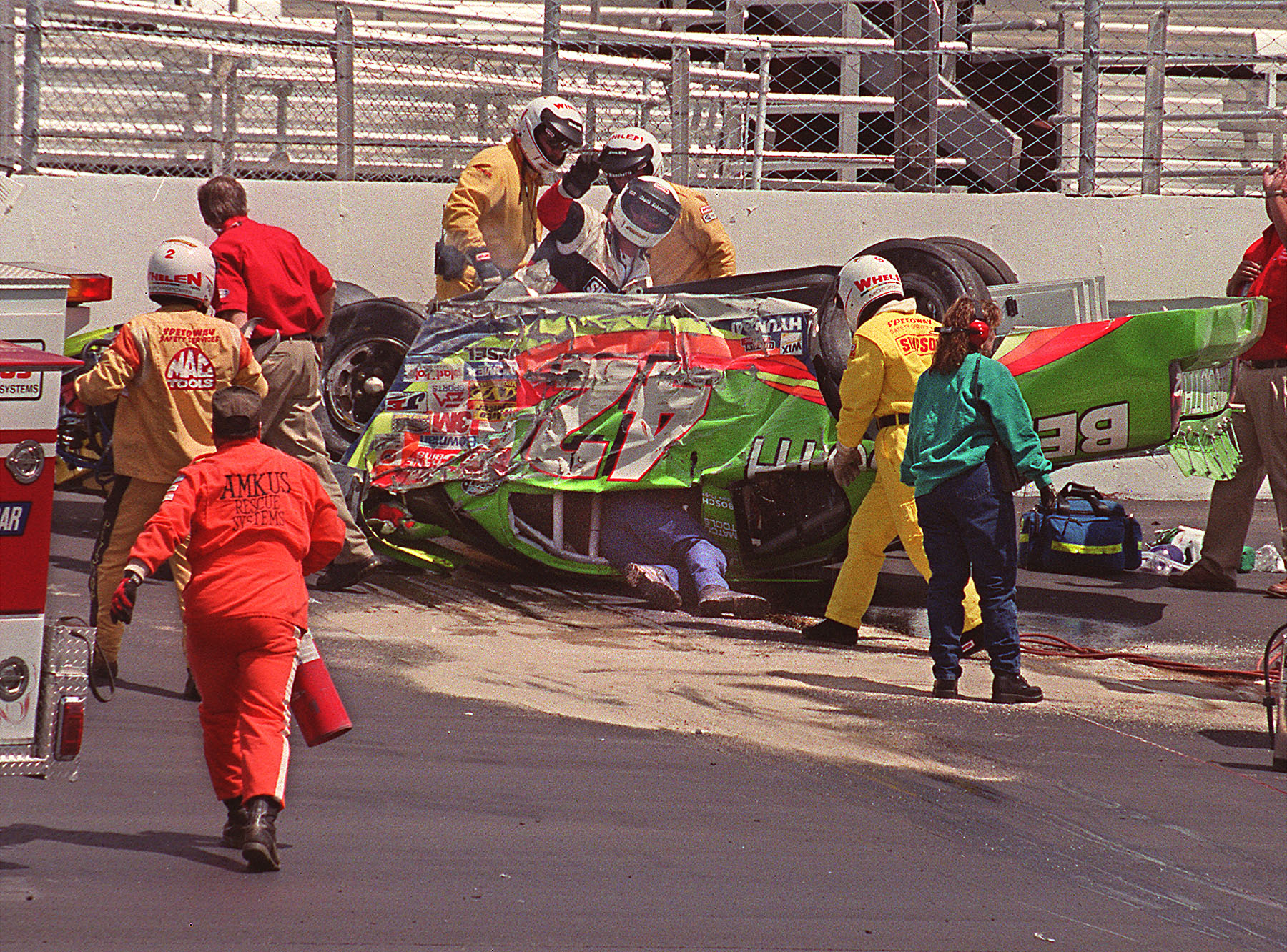NASCAR
Kenny Irwin Jr. and Adam Petty's Tragic Deaths Motivated NASCAR to Create the Kill Switch

NASCAR is equal parts thrilling and dangerous. While the drivers are the best in the world, that doesn't mean the sport lacks accidents. Many have lost their lives on the track. To that end, NASCAR has tried to transform the sport over the years to make it as safe as possible. But what are some of those safety measures? Let's look at the loss of two beloved drivers, Kenny Irwin Jr. and Adam Petty, and the standards brought on by their deaths.
The tragic deaths of Kenny Irwin Jr. and Adam Petty
RELATED: NASCAR Driver Jason Leffler’s Life Was Tragically Cut Short in Horrific Crash
ESPN reported that Adam Petty and Kenny Irwin, Jr. were two NASCAR drivers who died for the same reason on the same turn of the same track. Both drivers saw their throttle get stuck, leading them to tragically crash. Petty crashed in May 2000 while Irwin died less than a month later.
As tragic as those occurrences were, they had one lasting, positive, impact. They, along with other deaths, led NASCAR to implement a new safety measure known as the “kill switch.”
What is the ‘kill switch'?
RELATED: 10 Worst Car Accidents in NASCAR History
Unfortunately, NASCAR didn't act quick enough in the wake of the two crashes. According to Bleacher Report, these two deaths were followed by the deaths of NASCAR Truck Series driver Tony Roper and legend Dale Earnhardt. NASCAR decided to implement a new safety measure known as the “kill switch.”
This switch combats against a stuck throttle, allowing drivers to flip a switch to undo it. While NASCAR took way too long to install this device, it was better late than ever. It's also not the only measure that motorsports have seen to help its drivers.
Safety devices that auto racing has implemented over the years

Due to the dangers of the sport, NASCAR and other prominent racing organizations have experimented with making the sport safer. Some actions have been proactive thanks to science and research. Others have been in response to accidents or other incidents. ArticleBiz compiled a list of changes that NASCAR and other organizations have adopted over the years, some of which are listed below:
Limiting fuel usage
The 1964 Indianapolis 500 featured a crash in which Dave McDonald and Eddie Sachs were involved in a massive wreck that tragically took both drivers' lives. This led to new restrictions on the amount of fuel a car could hold at any one time.
Grandstand modifications
In one of the most grisly accidents in a race ever, Formula One driver Mike Hawthorn hit his brakes hard to avoid hitting his pit crew in a 1955 race. He ended up hitting them anyway at a speed of around 150 miles per hour. 83 people died as a result of the terrible accident. This led to the grandstand and pit crews getting new designs for where they're stationed.
HANS device
Earnhardt's 2001 death at Daytona shocked the racing world. While the loss of such a giant in the sport was incalculably tragic, some good did come out of the accident. As a result of the wreck, NASCAR implemented a new system known as the HANS device. The head restraint helped alleviate neck and head injuries.
Protections from impact
Formula One driver Martin Donnelly crashed in 1990 while going 140 miles per hour. While he lived, he suffered horrible injuries to both his brain and lungs. This led to Formula One implementing better protections from impacts overall, giving their vehicles more resilience against collisions and hard impacts.
Better response times to accidents
In today's racing, medical and emergency response crews appear on site seemingly within seconds after a crash. But this wasn't always the case. When Roger Williamson crashed at the 1973 British Grand Prix, he found himself stuck under his car, unable to get out. Driver Ronnie Peterson faced the same situation in the 1978 Italian Grand Prix. These events helped emphasize the need for speedy responses to accidents for onsite crews.











